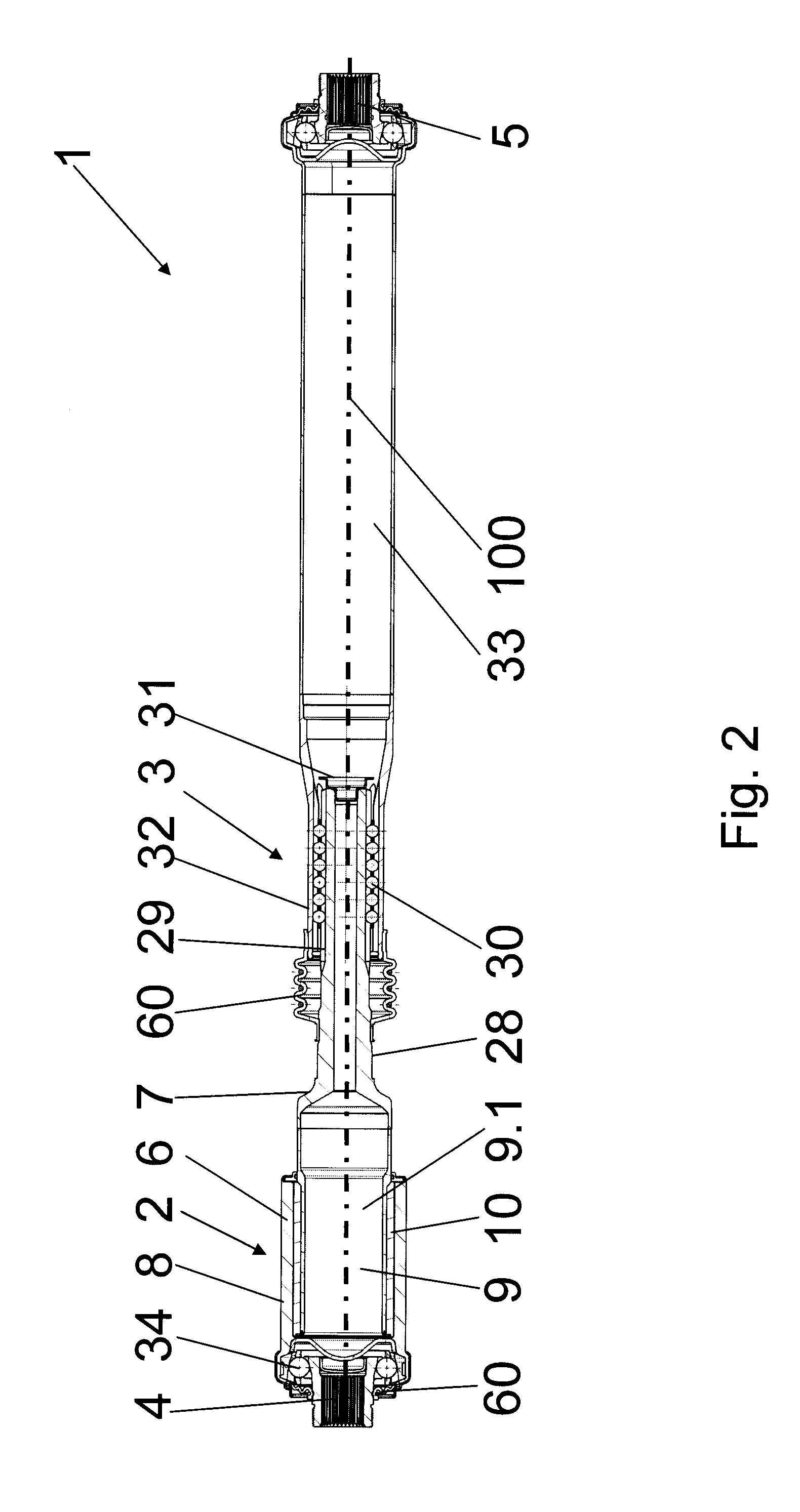Vibration damper for a drive train
a drive train and damper technology, applied in the direction of vibration suppression adjustment, spring/damper, yielding coupling, etc., can solve the problems of high demands on the stability of the elastic disk, unsatisfactory heat development, and high construction costs, so as to reduce the number of interruptions in the shaft, reduce the number of interruptions, and improve the effect of synchronous operation
- Summary
- Abstract
- Description
- Claims
- Application Information
AI Technical Summary
Benefits of technology
Problems solved by technology
Method used
Image
Examples
Embodiment Construction
[0057]FIG. 1 shows a drive shaft 1 comprising a vibration damper 2 and a linear displacement unit 3, and the rotation or longitudinal axis 100. The ends of the drive shaft 1 comprise connecting parts 4, 5, which are in the form of inner teeth and which enable a rotationally locked connection of the drive shaft to additional connecting pieces (not shown) such as wheel hubs or a differential gear on the one hand and inboard-mounted parts such as a transmission output shaft on the other.
[0058]The vibration damper 2 is integrated into the drive shaft 1 by means of the first and second shaft parts 6, 7. The first shaft part 6 is in the form of a sleeve 8, into which the inner part 9—or more particularly, the end region 9.1 of the inner part 9—of the second shaft part 7 is inserted axially. The damping part 10 is disposed radially between the sleeve 8 and the inner part 9, which damping part 10 is configured to be elastic or contains elastic elements. The sleeve 8 and the inner part 9 com...
PUM
 Login to View More
Login to View More Abstract
Description
Claims
Application Information
 Login to View More
Login to View More - R&D
- Intellectual Property
- Life Sciences
- Materials
- Tech Scout
- Unparalleled Data Quality
- Higher Quality Content
- 60% Fewer Hallucinations
Browse by: Latest US Patents, China's latest patents, Technical Efficacy Thesaurus, Application Domain, Technology Topic, Popular Technical Reports.
© 2025 PatSnap. All rights reserved.Legal|Privacy policy|Modern Slavery Act Transparency Statement|Sitemap|About US| Contact US: help@patsnap.com



